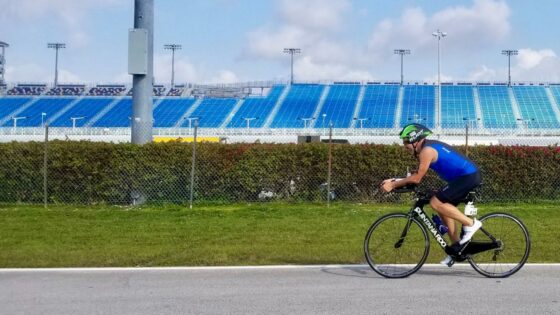
2017 will be our 10th year of guiding Endurance Nation athletes through our OutSeason® training protocol. Over 5000 athletes have joined us for our OutSeason®, generally running from early November through early to mid April, depending on their geographical location, race calendar, etc.
What is the OutSeason?
The highlights are:
- OutSeason® vs OffSeason: you are “out” of the race season but you are not “off.” You are not racing, freeing you up from the need to build endurance to meet the demands of long course triathlon, meaning we can focus our efforts on making you much faster.
- Running durability: we take the excellent running durability you’ve built across a season of high frequency running and make it even stronger by increasing or maintaining the running frequency within the OS.
- FAST then FAR: we take your current end-of-season fitness and build directly on that by making you a much faster 5k, 10k, half marathon runner, and 40k time trial cyclist. If we can make a faster a 10k runner and 40k time trialist, we’ve also made you a faster long course triathlete, once we put endurance, or FAR, under that FAST when we exit the OS and begin training for next year’s races.
- Minimal hours and maximum family, work, and life reset opportunities: you’ve been pretty selfish, frankly, with your time all year. In the OS you’ll step back, train fewer hours, and critically analyze your race day Return on Investment (ROI) for every training and admin minute spent. As a result, the Endurance Nation OutSeason only has 5-8hrs of training scheduled per week, and includes 2 days off each week as well.
Lessons Learned:
When to Start OutSeason® = Head vs Calendar
The best time to start your OutSeason® is more a function of where you head is at vs your race calendar for next year. That is, are you ready to commit to 6-8 hours per week of solid work, focus on maintaining or developing good body composition habits, execute a consistent core strength program, etc. If the answer is “no, not yet,” then it’s best to wait until you are and then adjust your training on the backend when we switch towards training for your races.
October through December Self Honors March through April Self:
Think of yourself as having two identities: Mr March/April is the guy who’s training hard, beginning to prepare for races, and is getting serious. But Mr October/December holds a lot of power over how prepared, or not, his spring twin is. In fact, Mr Fall can totally screw Mr Spring by jumping off the Running Frequency Train and onto the Ben and Jerry’s Bus, forcing you to have to do a significant rebuild of your fitness before you can even begin to make yourself faster.
In the end, you have two choices:
- Leverage the excellent base of endurance fitness you right now to make yourself faster, building next seasons speed on the foundation of this current, season ending fitness, or…
- Let yourself go and subject yourself to an extended period of rebuilding before you can begin to build a faster you.
Trade Training Volume for Cycling Intensity and Running Frequency:
Consider putting a hard cap on your total cycling hours…and then ride very, very hard within that fixed cap. Just because you live in Florida and can do a 3-4 hour ride in February doesn’t mean you should. Instead, set yourself a cap of 2 hours, drill yourself, and be home with your family hat on by 9am.
Likewise, commit yourself to running frequently. Just get out the door and run, often, and consider using the local 5k, 10k series to keep you motivated. Even better, schedule yourself for 2-3 half marathons in the late winter, early spring, as these are excellent tools for helping maintain accountability for your run training.
Create, or Maintain, Excellent Body Composition Habits
This last one is a big one, and something that many of us struggle with: we’ve all done so much work throughout the season to create and maintain excellent eating habits in order to reach our race weight goals. While we certainly don’t expect you or our athletes to maintain your race weight throughout the entire year, your Spring Self will thank your Winter Self when your Winter Self maintains those excellent eating habits and limits the damage. Speaking from personal experience, it’s frustrating to wake up in January 12 to 14 pounds above my racing weight because (1) I know that all I needed to do to avoid that was to maintain my habits of logging my diet against my exercise, and (2) I know how much work and how long it’s going to take to get back to a good training weight and then race weight.
Interested in Joining Endurance Nation for our OutSeason and Beyond?
Click on the image below to learn more and to join our waiting list!




Leave a Reply